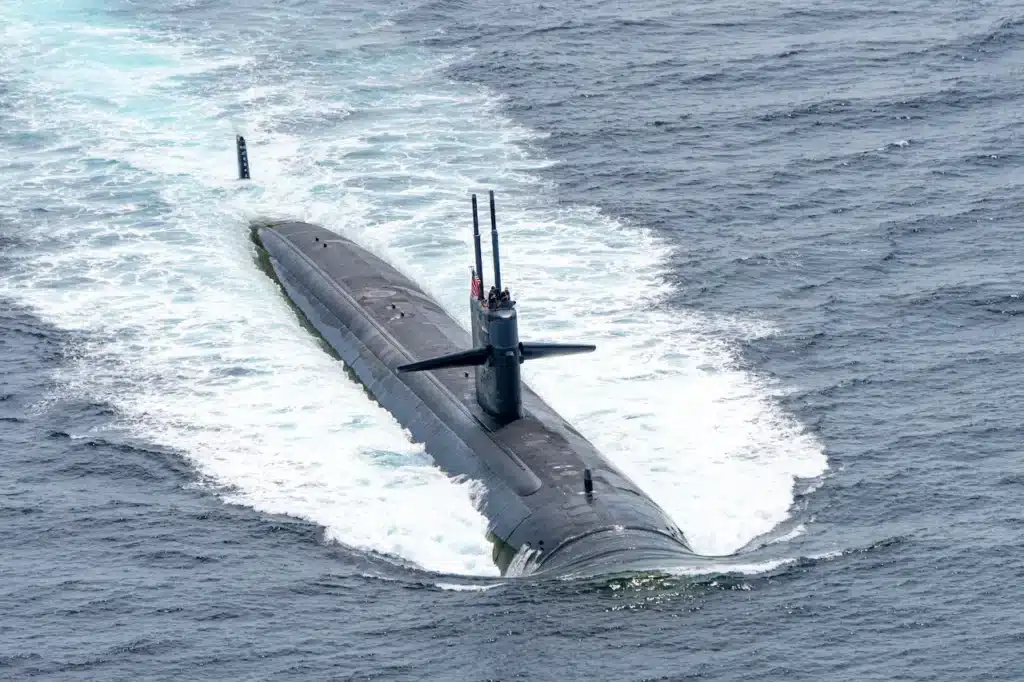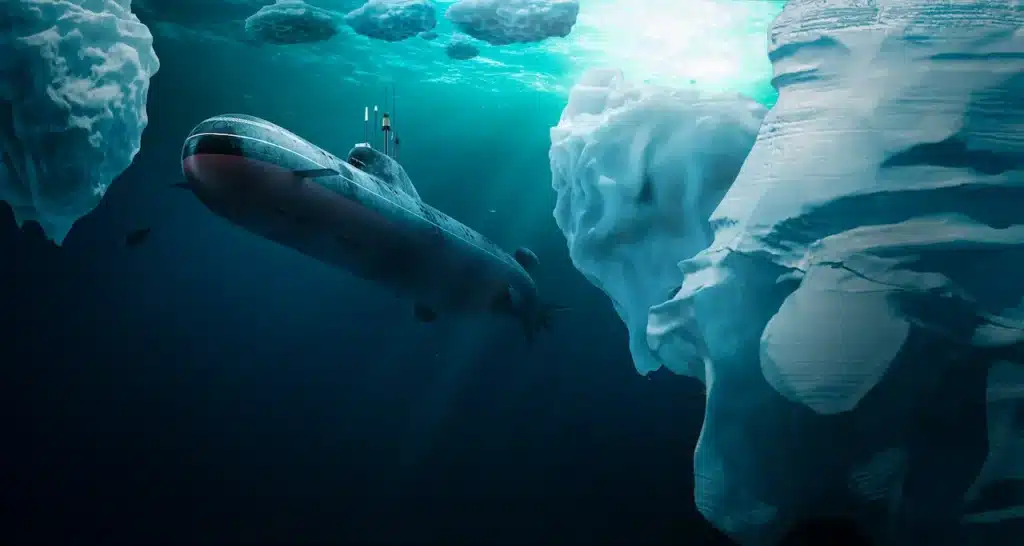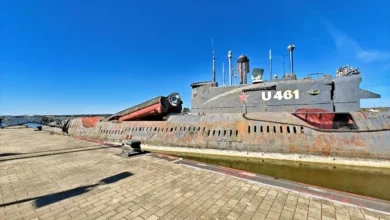A group of mariners chart a course high above the Arctic Circle where the sea ice extends to the horizon, and the temperatures are well below freezing. They navigate through some of Earth’s most dangerous waters. These experts in polar navigators, also known as Ice Pilots, operate at the intersection between geography, climate science and maritime traditions. Their knowledge as guardians of the polar routes is crucial to navigate not only the icy seascape, but also the wider environmental and geopolitical issues of the Arctic.
Arctic Geography and the Context of Ice Navigation
To understand the role played by ice pilots, one must first grasp the complexity of the polar regions. The Arctic Ocean is semi-enclosed by landmasses in North America, Europe and Asia. The Arctic Ocean includes important maritime areas such as the Northwest Passage that runs through the Canadian Arctic Archipelago, and the Northern Sea Route that runs along the Russian Siberian coastline.
The Arctic Ocean is covered with sea ice, which varies seasonally in thickness and extent. The dynamic seascape of the Arctic is affected by many physical factors, including ocean currents and prevailing winds. These geographic variables create an unstable navigational environment that requires both technical knowledge and local understanding.

What Are Ice Pilots and How Do They Work?
The ice pilots, also known as ice navigation, are experienced mariners who have received specialised training for polar operations. Ice pilots are often recruited from former icebreakers and northern fleet captains. They have a thorough understanding of sea ice behaviour, ice classifications and polar weather.
They are responsible for guiding ships through icy water, usually aboard research vessels or commercial vessels operating in the Arctic and Antarctic. Ice pilots are different from standard pilots who specialise in port entry. They stay on board for longer voyages and interpret satellite data. They also advise on ice conditions and coordinate with national ice services.
Ice pilots can be essential interpreters from a geographical perspective. They bridge the gap from the abstract cartography of nautical charts to the lived, volatile geographies of floating ice flakes, pressure ridges and polynyas.
Ice as a Geographical Barrier
Sea ice is not just a navigational danger, but a geographical feature. The ice cover is a physical barrier that limits marine transportation and shapes seasonal accessibility to polar regions. It influences the flow of goods and wildlife migration patterns, as well as the geopolitics surrounding Arctic sovereignty.
In the Arctic, the ice cover can reach 14 million square kilometres in winter, and then shrink to 6 million square kilometres in summer. Sea ice is highly unpredictable despite a warming climate, and the trend towards longer seasons without ice. Unprepared vessels can be trapped or damaged by storm surges, sudden refreezing, or wind shifts.
The importance of ice-pilots is highlighted by this variability. They make real-time decisions using a combination of visual observation, radar imagery, satellite images, and geographic Information Systems (GIS). This can help prevent disasters and ensure efficient routing.
Tools of the trade: Technology meets geography
Modern ice-pilots use a variety of tools to complement their practical knowledge of ice dynamics. Satellite imagery gives a large-scale view of ice movement and coverage, while synthetic aperture radar (SAR), a radar that detects ice in darkness and cloud cover. GPS (Automatic Identification Systems), and AIS (Global Positioning Systems) help track ship locations in dynamic icefields.
Even with the most advanced technology, human interaction is still essential. The ice pilot can read subtle clues from the environment, such as colour changes in ice or wind direction. This blend of geographic interpretation and remote sensing is what makes ice navigation so effective.
Climate Change and New Arctic Geography
The changing geography of the Arctic is one of the biggest challenges facing ice pilots today. The extent and thickness are declining over time as global temperatures rise. In the Arctic, it is roughly twice what it is globally. The shift is not uniform. Some regions see ice that has formed in a single year, while others have more fragmented and mobile ice.
These changes require ice pilots to adapt to ever-changing conditions. Thinner ice is often more dangerous than thicker ice, because it can shift faster under wind stress, or form sharp ridges which damage hulls. New shipping routes are opening earlier in the season. This means that vessels without polar experience will be venturing to areas where knowledge of traditional practices is essential.
The receding ice has redrawn the Arctic’s navigable space from a geographical perspective. Inaccessible areas are now viable transit corridors. This attracts the attention of resource extraction industries and national governments. The ice pilots are therefore at the forefront of a rapidly changing maritime geography.

Geopolitical Boundaries of Ice Navigation
The ice pilots are not operating in a vacuum. The Arctic is a region with many territorial disputes and international conventions, such as the United Nations Convention on the Law of the Sea. Understanding the physical geography of these waters is important, but so are geopolitical borders.
The Russian authorities heavily regulate the Northern Sea Route, which runs along the coast of Russia’s Arctic region. They require that foreign vessels carry Russian ice-pilots and inform maritime authorities. Canada’s Northwest Passage, which is also governed by its domestic policies, recognises the region as being internal waters. However, this claim is contested.
The navigation strategy of ice pilots should therefore include political geography. It’s not just about avoiding icebergs, but also about adhering to regulations, permits and international agreements.
Environmental Stewardship and Risk Management
The role of ice pilots in protecting the environment is also important. Arctic ecosystems can be fragile, and even a small oil spill or grounding could have devastating consequences for marine life as well as indigenous communities. Ice pilots are environmental stewards who contribute to the safety of vessels in Particularly Strict Sea Areas (PSSAS) and other protected areas.
A daily risk assessment is essential. Before plotting a route, pilots assess the vessel’s cargo type and propulsion power. They also consider its ice class rating (which determines how well it can handle ice). They may suggest icebreaker assistance or advise rerouting to avoid sensitive marine environments.
Ice pilots can influence the relationship between humans and the environment in polar areas through their decisions. They help to balance the economic benefits from Arctic shipping with the environmental imperatives of conservation geographies.
Indigenous Knowledge and Local Geography
In certain regions, such as the Canadian Arctic region, navigation on ice is influenced not only by science and experience but also by Indigenous Knowledge Systems. Inuit hunters have, for instance, a profound understanding of sea-ice behaviour gained from generations of observation and travel. Arctic researchers and navigators are increasingly working to integrate traditional ecological knowledge into modern navigation systems.
This localised geographic intelligence is useful to ice pilots, who can use it to determine where leads are likely (narrow openings) in the ice or how animal behaviour indicates changing ice conditions. This blend of perspectives enhances our geographic understanding of the Arctic, both as a physical space and a cultural one.
Conclusion: Charting the Future of Polar Navigation
Ice pilots are a great example of how geography, both physical and human, shapes the realities of life in extreme environments. The demand for navigators with the skills to navigate ice-covered water will continue to grow as climate change continues its transformation of the Arctic.
Ice pilots are a rare breed of geographic experts. They have a special expertise in the frozen frontier, where satellite data and saltwater instinct meet. They are explorers and risk managers. They also act as environmental guardians and cultural intermediaries. They are essential to the story of human interaction with Earth’s extreme geographies.




